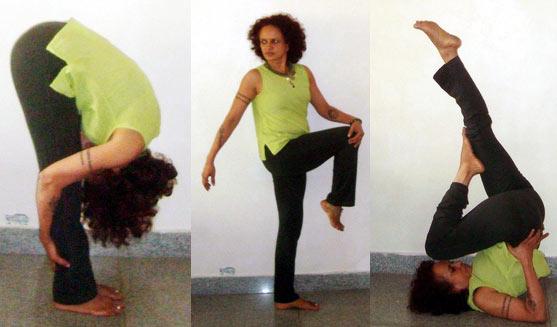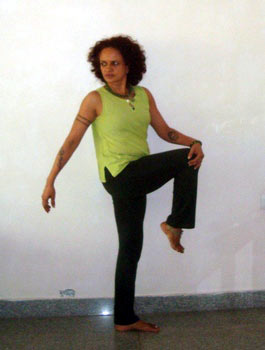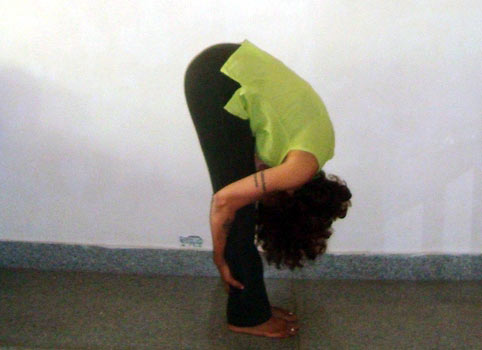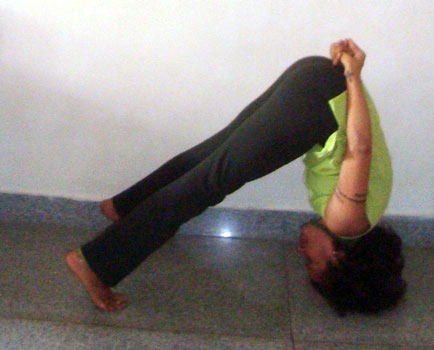
Shameem Akthar, yogacharya trained with the Sivananda Yoga Vedanta Center, takes you through five yoga practices to help your brain stay in shape.
Some progressive schools not just in Mumbai but other parts of the world have included yoga as a part of the school curriculum because they appreciate the impact of yoga on a child's focus, concentration and memory power. In fact, actors and those in profession that requires you to stay focused also use yoga as a complement that powers their artistic skills.
Yoga's sixth limb is called dharana, meaning focus. To arrive at this stage you have to simultaneously practice its five other limbs of personal hygiene, social decorum, asanas (the physical practices) and pranayama (breathing techniques).
The fourth limb of pratyahara (sense withdrawal) starts off with mind-introverting practices. Clearly just a handful of practices will not do, if you wish to power your brain through yoga.
It involves a life-style overhaul and a determined and dedicated practice of all its aspects. So, though we are highlighting the five poses that would help you with powering your memory, it would be incomplete without a daily practice that involves at least ten to 15 practices (see earlier columns by this author in this section) that cover the entire body and mind.
The best practices for the brain include inversions (eg shoulderstand or the headstand), standing balances (eg. Crescent pose), arm balancers (eg lolasana), eye exercises (trataka) and pranayama practices (eg anulom vilom).
Shameem Akthar, yogacharya trained with the Sivananda Yoga Vedanta Center, takes you through five yoga practices to help your brain stay in shape.

Sit in a meditative posture. Place a black dot or a candle flame (the latter should be avoided by those with epilepsy). You may also chose an object of meditation, like an image or object. Once chosen, practice on the same object every time.
Keep the chosen object at eye level. Focus on this for a few seconds or till tears appear in either or both eyes. Blink eyes. Rest eyes by palming the eyes (rubbing hands together and covering closed eyelids). Repeat again. Initially do it for a short while. Increase time as comfort level improves with the practice.
Benefits: Aids memory. Helps cure mental tensions and psychosomatic problems

Stand up straight. Fold right leg at the knee, as shown. Extend right hand out lightly. Using left hand draw the right knee across towards the left side, creating a squeezing effect.
Hold for a few second, breathing naturally. Release, and repeat for the other side. After regular practice, for real impact on the nervous system, you need to hold the pose for longer, extending time to half a minute and more.
Benefits: Works on the cerebellum, involved with balance and the memory power. It also helps with impulse control, emotional upliftment and mental stimulation. Tones the legs, abdomen, hips.

Stand up straight, with feet together. Inhale deeply. Exhaling, lower arms, placing elbows behind the knees as shown. Lightly bend knees, to do this. It also draws the head closer to the legs. Now continuing with normal breath, begin to straighten the knees as much as is comfortably possible.
Hold initially for a few seconds, slowly extending time to a minute or more. Then release the hands, hand them loose and very slowly straighten yourself, to stand upright once more. Follow this with any standing backbend (from earlier columns).
Benefits: Sends a blood rush to the face and brain, keeps both youthful and vital. Tones the digestive tract, makes the spine supple, relieves tensions.

Kneel on fours, in the cat stretch (marjariasana/ see earlier column for this pose). Place the crown of the head on the mat, between the palms. Lift hips up, straightening the knees. Push up on the toes, shifting the weight to the legs. Keep the palms down, if you experience too much pressure at the neck.
Those who are used to yoga practice and are comfortable with inversions like the headstand may raise the hands behind the back, to clasp them lightly. Continue in the final position for a few seconds. To end the pose, place palms down, lower the knees, lie on your stomach. Sit up to do a few neck-releasing poses to ease the neck.
Avoid this pose if new to yoga, have a weak neck, circulatory problems including thqt of the heart, or any problem in the ENT region.

Lie on your back, with legs out straight. Raise them up, to create a right angle with the body. Inhale. Exhaling, hoist hips up, placing palms below at the hips to hold them up. Continue normal breathing.
Fold the right leg at the knee, put the right sole against the left thigh, as shown. Right knee should rest on forehead. Hold for half minute. Then shift, to do for the other leg. You may increase time in the final position as comfort level increases in the pose.
Benefits: It sends a blood gush to the face and the brain, keeping both youthful. Massage the energy and healing centres at the neck, including the thyroid and the parathyroid. Tones the whole body, by creating an anti-gravity effect.